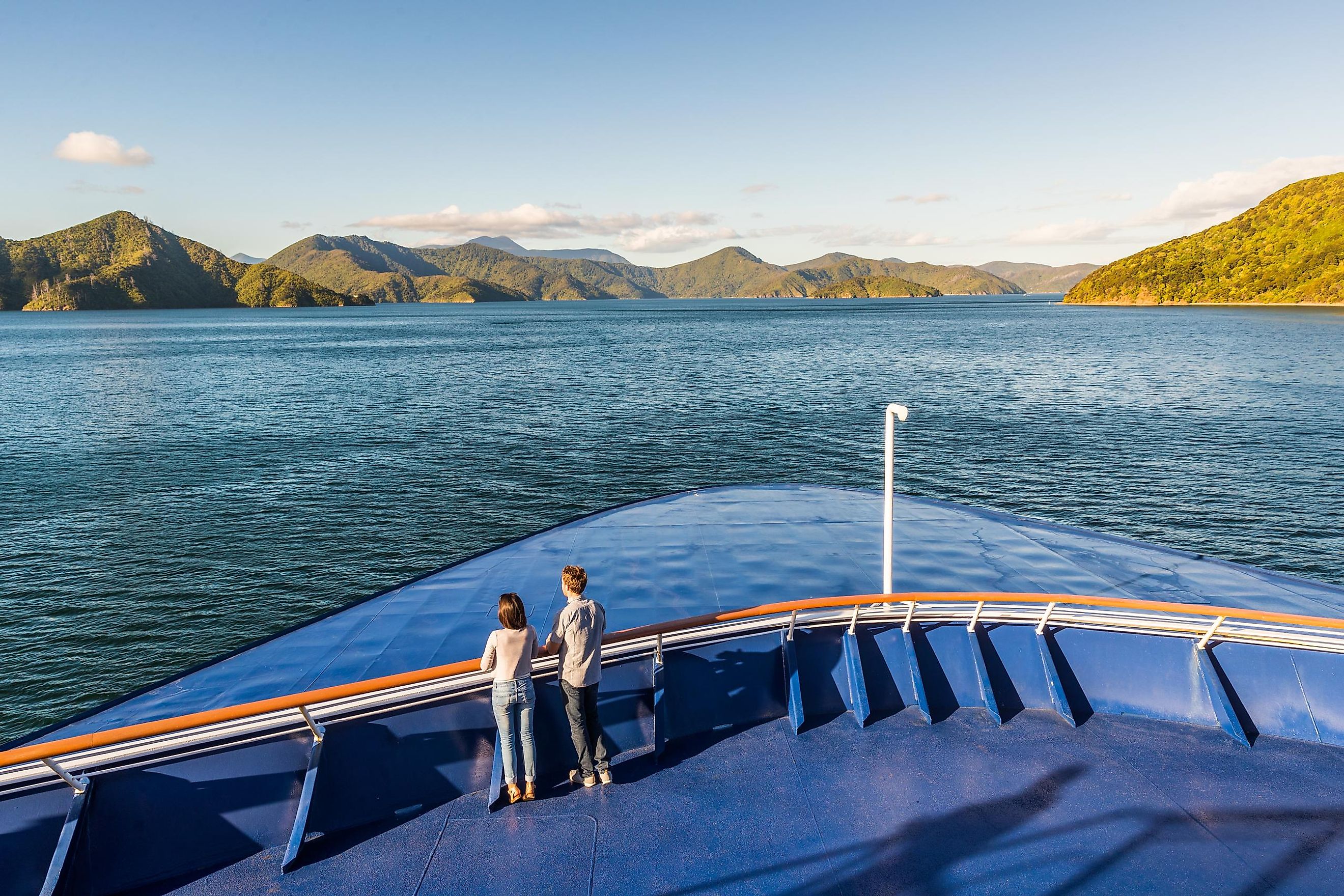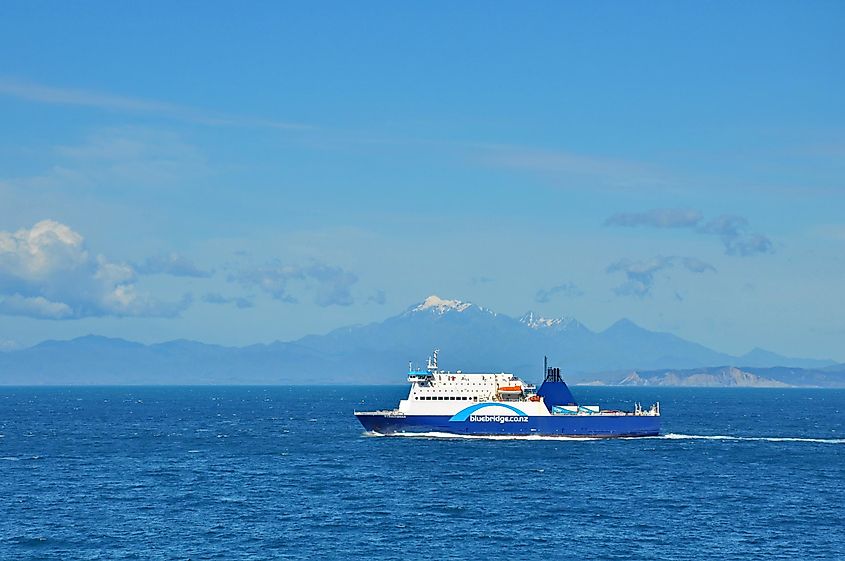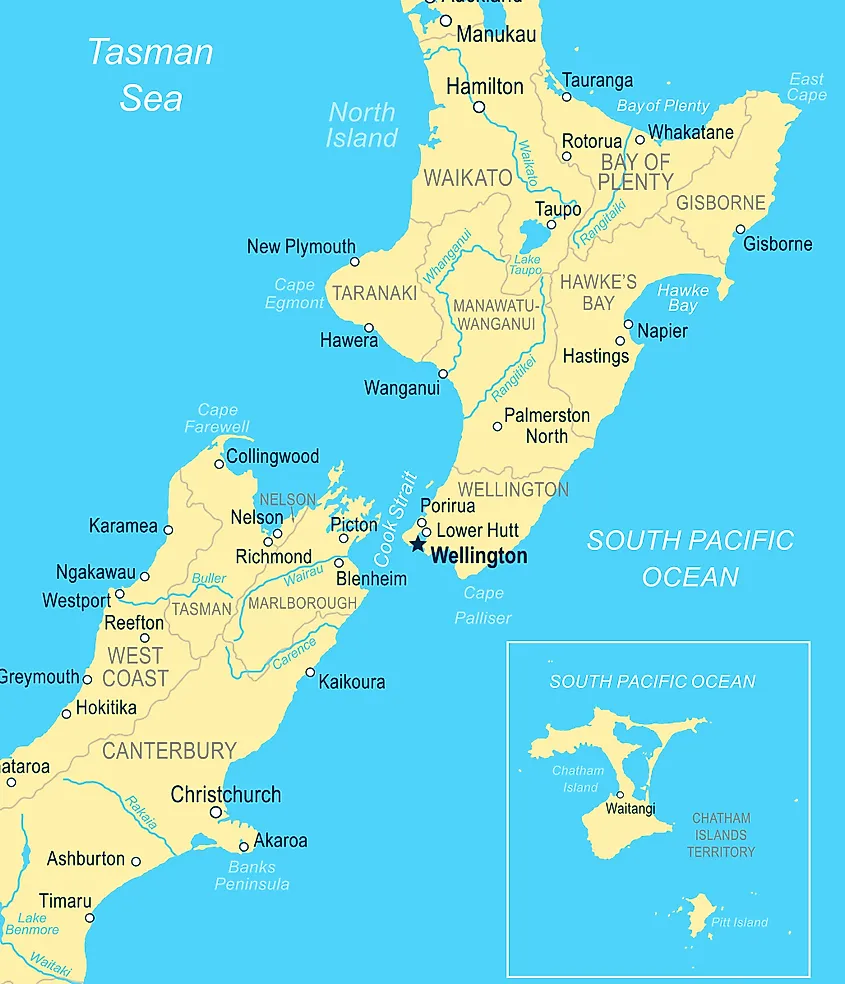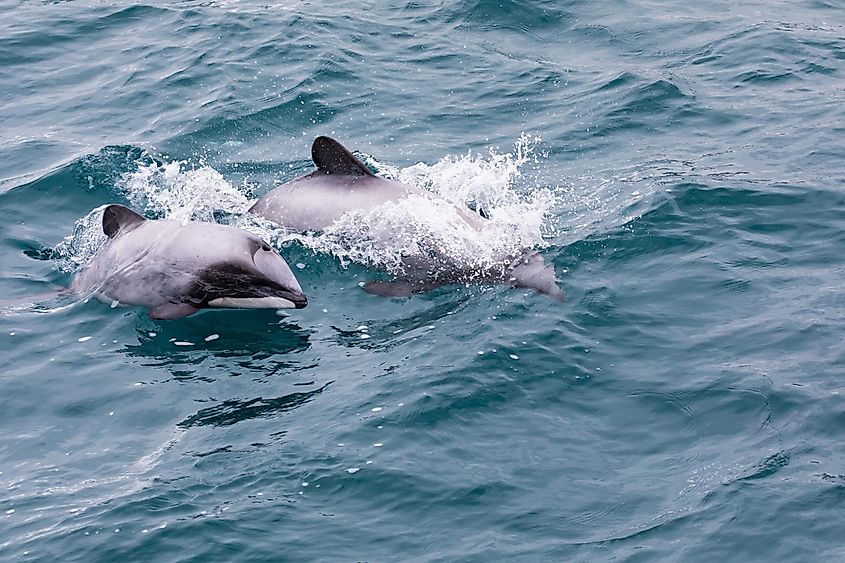
Cook Strait
Cook Strait is a stretch of water that formed when sea levels rose at the end of the last Ice Age, dividing New Zealand's North and South Islands and connecting the Tasman Sea with the South Pacific Ocean in the process. The waterway takes its name from the 18th-century British naval officer James Cook, who successfully sailed it and then christened it in 1770. However, the indigenous Māori had previously named the feature Te Moana-o-Raukawa, meaning the Sea of Raukawa. The word Raukawa can be roughly translated as "bitter leaves," referring to a local species of shrub and perhaps alluding to the infamously capricious and sometimes dangerous conditions that swell up in the gap between the two main land masses. With that said, over the centuries, enough has been learned about Cook Strait that ferries have been able to successfully (for the most part) make the crossing for the past 61 years, and approximately 135 people have even made the 22-kilometer (14-mile) swim!
Geography Of Cook Strait

The Cook Strait is in the Oceania region – separating the North and South Islands of New Zealand and bridging the South Pacific Ocean (to the Southeast) to the Tasman Sea (to the Northwest). It runs in a generally Northwest to Southeast direction, with the South Island marking the 30-kilometer (19-mile) Western border and the North Island framing the 40-kilometer (25-mile) Eastern boundary of the waterway. Both coasts are mostly composed of steep cliffs.
At its narrowest point (Cape Terawhiti on the North Island and Perano Head on the South Island-affiliated Arapaoa Island), Cook Strait is 22 kilometers (14 miles) wide. On a clear day, these two points are visible to the naked eye. The average depth of the waterway is 128m (420 feet).

There is a small collection of tiny islands in the strait known as "The Brothers." They sit off the East Coast of Northern Arapaoa Island, offering refuge for the Brothers Island tuatara, lizard-like reptiles endemic to New Zealand, and a warning for sailors, as is signaled by the Brothers Island Lighthouse.
A Brief History Of Cook Strait
As is often the case when discussing the known history of many places, there is the relatively modern scientific lens and the generation-spanning stories of the indigenous populations. Cook Strait (Te Moana-o-Raukawa) is no exception. According to the Māori oral tradition, once upon a time, a navigator named Kupe was hunting an evading octopus. He pursued it in a canoe all the way across the strait, finally slaying it at a site called Patea.

Flash forward to the era of European exploration, when Dutch explorer, Abel Tasman, spotted the strait in 1642. Initially, he thought it was a large curve in the coastline known as a bight and gave it the misleading name of Zeehaen's Bight. It wasn't until around 1769-1770 that Captain James Cook renamed the feature, correctly labeling it as a strait after personally sailing its waters.
Slowly but surely, more and more points of connection were established after the first crossings of Cook Strait. In 1866, the first submarine copper telegraph cable was laid, making instant communication possible between the nation's halves. In 1920, the first flight across the strait was completed, with regular air services beginning in 1935. Not long after that, in 1962, the Aramoana, an Interislander ferry operated by New Zealand Railways (now KiwiRail), began making scheduled crossings. Interislander continues its ferry services to this day, making weather-dependent trips back and forth from the South Island town of Picton and the nation's capital city of Wellington, on the North Island.
Not to be outdone by the machines, local man Barrie Devenport also crossed the strait (but under his own power) in 1962 in an impressive 11 hours and 20 minutes. Then, in 1975, 18-year-old American Lynne Cox became the first woman to swim Cook Strait, which she did in 12 hours and 7 minutes. On record, there have been 77 swims from the North to South Island, 46 from South to North, and three round-trip crossings, all performed by resolute Kiwi Philip Rush, in the 1980s. Along with these formally documented crossings, there are other successful swims purported by the Māori.
In conjunction with the various triumphs of technology and physicality, Cook Strait also witnessed many fatal shipwrecks between 1851 and 1968, as well as occasional but severe earthquakes over the centuries.
Wildlife In And Around Cook Strait

Humans aren't the only animals that like to splash around in the Cook Strait. Many species of dolphins, including the common dolphin, bottlenose, dusky, the New Zealand-exclusive Hector's dolphin, and occasionally the Risso's dolphin, can be spotted frolicking in the turbulent waters and even "escorting" the ferries (part of the charm of that mode of transportation). Other notable marine life includes: killer whales, long-finned pilot whales, humpback whales, southern right whales, blue whales, sei whales, sperm whales, Kekeno fur seals, albacore tuna, broadbill swordfish, mako sharks, white sharks, marlin, and even a few giant squid specimens have been found.
The world's largest seabird, the albatross, can also be observed in the vicinity of the strait. White-fronted terns, shags, and seagulls (where aren't they found?) also frequent these waters.
New Zealand's Cook Strait is an impressive and moody strip of water that helps to define the country's geographical boundaries. This inter-island strip has inspired great legends and incredible feats of endurance but has also served as the impetus for the advancement of New Zealand's transportation and telecommunication networks. Modern-day Kiwis share the bounty of the strait with the local Māori, as well as a slew of beloved marine mammals, sizable fish, and soaring seabirds.











